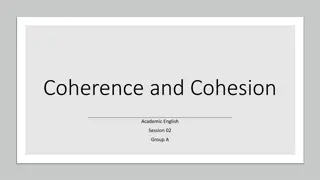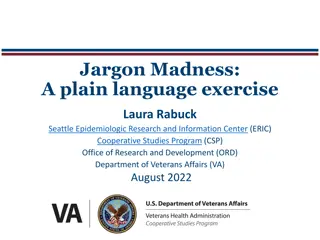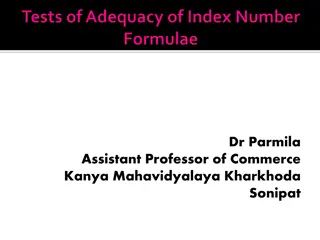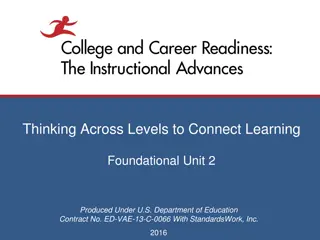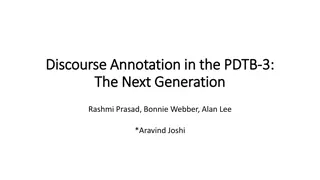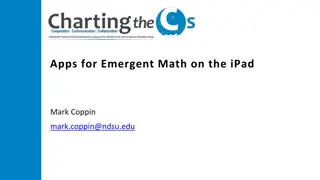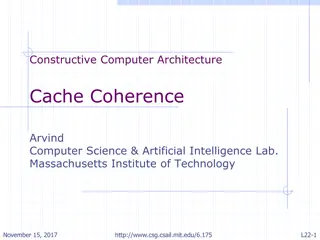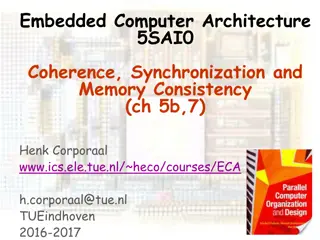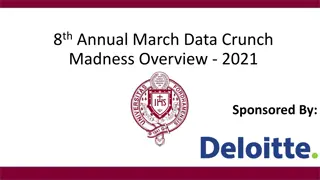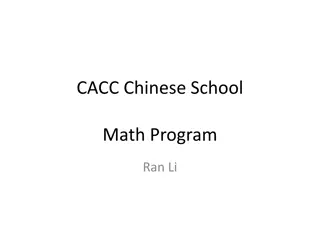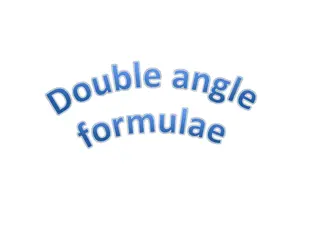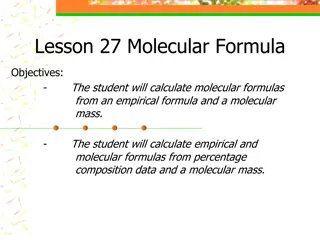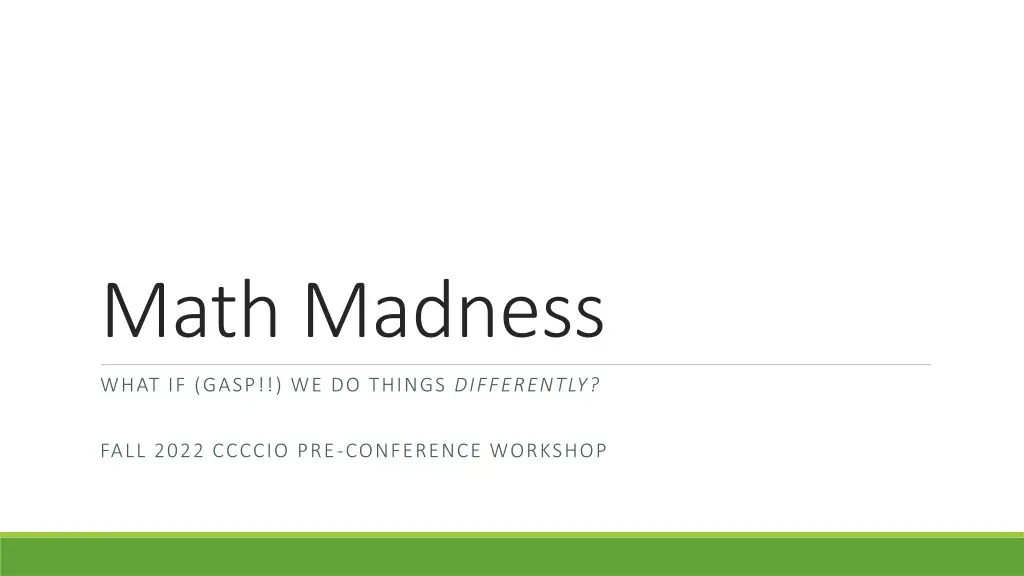
Innovative Ideas for Community College Improvement: Fall 2022 Workshop Insights
Explore groundbreaking concepts discussed in the Fall 2022 CCCCIO pre-conference workshop, including the need for new metrics, simplifying apportionment formulas, and fostering better understanding among faculty and administrators. Dive into ways to transform traditional approaches for the benefit of students and institutions.
Download Presentation

Please find below an Image/Link to download the presentation.
The content on the website is provided AS IS for your information and personal use only. It may not be sold, licensed, or shared on other websites without obtaining consent from the author. If you encounter any issues during the download, it is possible that the publisher has removed the file from their server.
You are allowed to download the files provided on this website for personal or commercial use, subject to the condition that they are used lawfully. All files are the property of their respective owners.
The content on the website is provided AS IS for your information and personal use only. It may not be sold, licensed, or shared on other websites without obtaining consent from the author.
E N D
Presentation Transcript
Math Madness WHAT IF (GASP!!) WE DO THINGS DIFFERENTLY? FALL 2022 CCCCIO PRE-CONFERENCE WORKSHOP
About me Mathematics Professor Dean of Science, Mathematics, and Engineering for 7 years Oversee college-wide enrollment management Worked with district programmers to write all EM reports CIO for 7 years CCCCIO Rep to Metrics Workgroup CCCCIO Rep to Chancellor s Office Fiscal Advisory Committee Trainer for CIOs and Deans on Apportionment, Attendance Accounting, SCFF, Budget, Title 5, Ed Code, etc Know What works and why and how it works What doesn t work and why and how it fails and how that constrains us Implications of changes what details and systems are tied together and how
Traits, critiques, metacognitive accusations Stubborn Difficult Detailed Creative Passionate Solutions Oriented Unafraid to create new approaches to support students
What if we do OUR jobs differently? 1. Conversations with faculty about productivity or efficiency consistently flop for philosophical reasons. What if our metric is part of the problem? Could we develop a NEW metric that could break through to understanding among faculty, deans, and CIOs? 2. Our Apportionment Formulas are ridiculously complex. What if we drastically simplify? Could we have an approach where all colleges teaching the same course with the same building blocks earn the same apportionment?
Caveat In this presentation, I m focusing on semester schools. The same approaches work for quarter schools but would cloud this presentation unnecessarily. Happy to talk with folks from Lake Tahoe, Foothill, and DeAnza later (our quarter-school colleagues)! One benefit of the first item: It actually makes apples-to-apples comparisons possible between semester and quarter schools!
A Better Revenue-to- Expense Ratio for CCCs
Metrics help quantify abstract concepts but don t always convey meaning Body Mass Index (BMI) A person s weight in kilograms divided by the square of their height in meters 5 ft tall person weighing 110 lbs: BMI = 21.5: Healthy Weight 6 ft tall person weighing 220 lbs: BMI = 29.8: Overweight 6 ft tall person weighing 160 lbs: BMI = 21.7: Healthy Weight Quarterback Passer Rating Range of 0 to 158.3 based on Completion percentage Yards per attempt % of TDs per pass % of INTs per pass Aaron Rogers 2011: 122.5 Patrick Mahomes 2017-21: 105.8
The Typical CIO Charge Improve Productivity, a.k.a. Improve Instructional Efficiency Productivity or Efficiency is basic economics a revenue to expense ratio Revenue comes from classes via apportionment (FTES) Expense comes most directly from paying the instructor s salary and benefits Basic shape: Proxy for Revenue Proxy for Cost 8
The Typical CIO Charge Three options 1. The original WSCH FTEF Protypical value for an efficient college 525 2. The teenager FTES FTEFProtypical value for an efficient college 17.5 3. The newcomer FTES aFTEFProtypical value for an efficient college 35 aFTEF = annualized FTEF, e.g. 3-unit lecture is 10% of year instead of 20% of semester 9
The three metrics are mathematically equivalent WSCH FTEF = 30 x FTES FTEF = 15 x FTES 1. aFTEF 2. They all tell the same story, but use different ranges to represent what s normal or desirable or effective or efficient. 3. The newcomer FTES aFTEFrepresents weighted average class size which everyone can feel.
Example 1 Typical 3-unit lecture course with 40 students in a traditional semester (17.5 wks) Course Contact Hours Enrollment 525 annualized load factor Census FTES aFTEF= 3-unit lecture course: 3 units x 17.5 hrs/unit = 52.5 hours Enrollment = 40 20% of a semester = 10% of the year, so aFTEF = 0.10 52.5 40 525 0.10 FTES aFTEF= = 40
Example 2 Typical 5-unit math course with 38 students in a traditional semester (17.5 wks) Course Contact Hours Enrollment 525 annualized load factor Census FTES aFTEF= 5-unit lecture course: 5 units x 17.5 hrs/unit = 87.5 hours Enrollment = 38 33.33% of a semester = 16.67% of the year, so aFTEF = 0.1667 87.5 38 525 0.1667 FTES aFTEF= = 38
WHY?? Why does the class size pop right out?
Spell out formula and do some algebra Course Contact Hours annualized load factor= Census Enrollment Weekly Hours Census Enrollment 17.5 FTES aFTEF= 525 525 Weekly Hours 30 multiply by reciprocal 1 Weekly Hours Census Enrollment 17.5 30 = Weekly Hours 525 30 = Census Enrollment!
So IF its straight lecture in a traditional semester FTES aFTEF= Census Enrollment Lab loads, composition loads, stacking, and compressed calendars affect the resulting value
Example 3 Typical 4-unit science 3-unit lecture and 1-unit lab in a traditional semester (17.5 wks) science course with lab, with 24 students 3-unit lecture: 3 units x 17.5 hrs/unit = 52.5 hours 1-unit lab: 1 unit x 52.5 hrs/unit = 52.5 hours Course Contact Hours Census Enrollment 525 Total hours = 105 FTES aFTEF= Enrollment = 24 annualized load factor Annualized lec load = 10% = 0.10 Lab loaded at 80% of lec: Annualized lab load = 10% x 80% = 0.08 Total annualized load = 0.18 The lab load factor boosts weighted average class size by 2.67 students. 105 24 525 0.18 FTES aFTEF= = 26.67
Example 4 3-unit composition course composition course with 25% semester load (vs. 20%), with 27 students in a traditional semester (17.5 wks) 3-unit lecture: 3 units x 17.5 hrs/unit = 52.5 hours Enrollment = 27 Course Contact Hours Census Enrollment 525 Annualized lec load = 12.5% = 0.125 FTES aFTEF= annualized load factor 52.5 27 525 0.125 FTES aFTEF= = 21.6 The composition load factor reduces weighted average class size by 5.4 students.
Example 5 Stacked Double Science Course: Stacked Double Science Course: 4-unit (3 lec, 1 lab), with 48 students in lecture together and 24 students in each of two sections of lab in a traditional semester (17.5 wks) Two sections with shared lecture and separate labs Course Contact Hours Total hours = 105 for each student Census Enrollment 525 Enrollment = 24 per section, 48 overall FTES aFTEF= Annualized lec load = 10% = 0.10 annualized load factor Each lab loaded at 80% of lec: Annualized lab load = 10% x 80% = 0.08. Two sections: 0.08x2=0.16 Total annualized load = 0.26 48 in lec, 24 in lab, averages out about halfway in between at 36, with a boost from lab prorating of about 1 extra student 105 48 525 0.26 FTES aFTEF= = 36.92
Example 6 Typical 3-unit lecture course with 40 students in a compressed semester 3-unit lecture course: Target hours in compressed cal. = 54 hours Enrollment = 40 20% of a semester = 10% of the year, so aFTEF = 0.10 Course Contact Hours Census Enrollment 525 54 40 525 0.10 FTES aFTEF= = 41.14 FTES aFTEF= annualized load factor Gain about 1.14 students because of compressed calendar
This approach changes our vernacular We are striving for a college-wide (weighted) average class size of 35 students. The math department s average class size of 38 students is pulling the college-wide average class size upward. The English department s extra load factor coupled with small class sizes has two downward effects on the weighted average class size for the college. Stacked doubles of 24 average out above 36 and pull the college-wide average upward. Your division s average class size target is 32 students per class. Under COVID that fell to 27 students per class. We need 5 more students per class to pull up to pre- COVID levels.
Connections to Part 2 Course Contact Hours are highly variable under existing apportionment rules Yet they are based on a Course Outline of Record that is approved by the Curriculum Committee and every section covers the same COR Course Contact Hours Annualized Load Factor is already reported on MIS upload (XE03) at the section level Census Enrollment 525 FTES aFTEF= Contact hours are not reported to MIS but scheduling patterns are. annualized load factor Yet DataMart FTES figures, calculated from MIS scheduling patterns and census enrollments, are notoriously wrong. Consequently, FTES/aFTEF ratios from DataMart are meaningless.
A Better, Simpler, Unified Formula for FTES
Course Contact Hours are the Problem Highly variable Depend on Length of the semester Length of the course Start and end times Holidays Scheduling pattern Modality online versus in-person or variations thereof Course Contact Hours Census Enrollment 525 FTES aFTEF= annualized load factor But does it have to be that way?
The Course Outline of Record Program and Course Approval Handbook (PCAH) mandates a clear relationship between the overall units of the course, how those units are prorated between lecture, activity, and laboratory units, and how those units of lec, activity, and lab drive both contact hours and out-of-class student hours for studying, reading, writing, etc. Table 5 on page 58:
PCAH continued The PCAH then describes how each unit of credit must require between 48 and 54 hours of total student involvement. Together, the table and this passage imply another column in the table for total student hours and a functional relationship where the number of units drives the contact hours, out-of-class hours, and total hours.
Expanded Table from PCAH Outside-of- Class Hours Total Student Hours Instructional Category In-Class Hours Lecture (Lecture, Discussion, Seminar and Related Work) 1 2 3 Activity (Activity, Lab w/Homework, Studio, and Similar) 2 1 3 Laboratory (Traditional Lab, Natural Science Lab, Clinical, and Similar) If your district requires 48 hours per unit 3 0 3 Outside-of- Class Hours Total Student Hours Instructional Category Unit In-Class Hours Lecture (Lecture, Discussion, Seminar and Related Work) 1 16 32 48 Activity (Activity, Lab w/Homework, Studio, and Similar) 1 32 16 48 Laboratory (Traditional Lab, Natural Science Lab, Clinical, and Similar) 1 48 0 48
If your district requires 54 hours per unit Outside-of- Class Hours Total Student Hours Instructional Category Unit In-Class Hours Lecture (Lecture, Discussion, Seminar and Related Work) 1 18 36 54 Activity (Activity, Lab w/Homework, Studio, and Similar) 1 36 18 54 Laboratory (Traditional Lab, Natural Science Lab, Clinical, and Similar) If your district requires 52.5 hours per unit 1 54 0 54 Outside-of- Class Hours Total Student Hours Instructional Category Unit In-Class Hours Lecture (Lecture, Discussion, Seminar and Related Work) 1 17.5 35 52.5 Activity (Activity, Lab w/Homework, Studio, and Similar) 1 35 17.5 52.5 Laboratory (Traditional Lab, Natural Science Lab, Clinical, and Similar) 1 52.5 0 52.5
These tables imply a functional relationship between the units on a Course Outline of Record and its required Contact Hours In-Class Hours Outside-of- Class Hours Total Student Hours Instructional Category Unit Lecture (Lecture, Discussion, Seminar and Related Work) x 17.5*x 35*x 52.5*x Activity (Activity, Lab w/Homework, Studio, and Similar) y 35*y 17.5*y 52.5*y Laboratory (Traditional Lab, Natural Science Lab, Clinical, and Similar) z 52.5*z 0*z 52.5*z Total x+y+z Varies Varies 52.5*(x+y+z) Every offering of this COR requires this number of contact hours to be scheduled in one way or another! Here s the kicker Contact THESE are Hours!
Example 1 4-unit science lec/lab class with 3 units of lecture and 1 unit of lab Outside-of- Class Hours Total Student Hours Instructional Category Unit In-Class Hours Lecture (Lecture, Discussion, Seminar and Related Work) 3 17.5*3 35*3 52.5*3 Activity (Activity, Lab w/Homework, Studio, and Similar) 0 35*0 17.5*0 52.5*0 Laboratory (Traditional Lab, Natural Science Lab, Clinical, and Similar) 1 52.5*1 0*1 52.5*1 Total 4 Varies Varies 52.5*(4) Outside-of- Class Hours Total Student Hours Instructional Category Unit In-Class Hours Lecture (Lecture, Discussion, Seminar and Related Work) 3 52.5 105 157.5 Activity (Activity, Lab w/Homework, Studio, and Similar) 0 0 0 0 Laboratory (Traditional Lab, Natural Science Lab, Clinical, and Similar) 1 52.5 0 52.5 Total 4 105 105 210
Example 2 3-unit art activity class Outside-of- Class Hours Total Student Hours Instructional Category Unit In-Class Hours Lecture (Lecture, Discussion, Seminar and Related Work) 0 17.5*0 35*0 52.5*0 Activity (Activity, Lab w/Homework, Studio, and Similar) 3 35*3 17.5*3 52.5*3 Laboratory (Traditional Lab, Natural Science Lab, Clinical, and Similar) 0 52.5*0 0*0 52.5*0 Total 3 Varies Varies 52.5*(3) Outside-of- Class Hours Total Student Hours Instructional Category Unit In-Class Hours Lecture (Lecture, Discussion, Seminar and Related Work) 0 0 0 0 Activity (Activity, Lab w/Homework, Studio, and Similar) 3 105 52.5 157.5 Laboratory (Traditional Lab, Natural Science Lab, Clinical, and Similar) 0 0 0 0 Total 3 105 52.5 157.5
Example 3 4-unit math class with 3 units of lecture and 1 unit of activity Outside-of- Class Hours Total Student Hours Instructional Category Unit In-Class Hours Lecture (Lecture, Discussion, Seminar and Related Work) 3 17.5*3 35*3 52.5*3 Activity (Activity, Lab w/Homework, Studio, and Similar) 1 35*1 17.5*1 52.5*1 Laboratory (Traditional Lab, Natural Science Lab, Clinical, and Similar) 0 52.5*0 0*0 52.5*0 Total 4 Varies Varies 52.5*(4) Outside-of- Class Hours Total Student Hours Instructional Category Unit In-Class Hours Lecture (Lecture, Discussion, Seminar and Related Work) 3 52.5 105 157.5 Activity (Activity, Lab w/Homework, Studio, and Similar) 1 35 17.5 52.5 Laboratory (Traditional Lab, Natural Science Lab, Clinical, and Similar) 0 0 0 0 Total 4 87.5 122.5 210
Alternative Accounting Formula With revisions last year to Title 5 sections 58003.1 and 58009, the Total Student Contact Hours for all credit courses with any online components across all of California s 116 community colleges follow this formula: ??????? ????? ?????????? ????? ???? = 17.5 + 52.5 The formula is currently silent on Activity Units but the right answer is clear. It should be: ???????? ????? ??????? ????? ?????????? ????? ???? = 17.5 + 35 + 52.5 This is exactly what the table in the COR indicates the contact hours should be!
Proposed Universal Formula for TSCH for Census-Based Courses ???????? ????? ??????? ????? ?????????? ????? ???? = 17.5 + 35 + 52.5 Benefits We re already doing it for all Distance Ed classes successfully! No explosions! All offerings of the same course at a given college earn same contact hours All offerings of comparable courses across colleges earn same contact hours Matches the Course Outline of Record based on a traditional calendar Maintains hours as the basis of funding, aligning with positive attendance and competency-based education driven by hours Known drawbacks Eliminates the compressed calendar bonus (e.g. 3-unit class at 52.5 vs 54+) Colleges with extra hours on COR would have to adjust outlines, units, and/or Board Policy on partial units
Keeping it real For a typical 3-unit lecture class, we are aiming for: 52.5 hours in a traditional semester 54 hours in a compressed semester In a traditional semester, we are usually claiming 52.5 hours (sometimes less for short-term classes with holidays) In a compressed semester, we target 54 hours and aim to exceed that by the minimum amount, resulting in somewhere between 54 and 105% of that, or 56.7. But for online classes we claim 52.5, and for some we claim as low as 48. The point: All of these are in the neighborhood of 52.5 already!
Additional Needs and Benefits Programming in ERP drastically simplified for Contact Hours. Simple formula that any programmer can write into code! Requires new data elements in ERP and MIS upload. We have Course Units (total) CB06/07. Need: Lecture Units Activity Units Laboratory Units If these three values are uploaded, then DataMart can reliably estimate FTES using the formula and census enrollment. Coupling the accurate FTES estimate with XE03 (aFTEF factor), would allow DataMart to accurately display FTES/aFTEF weighted average class size comparisons by TOP code and College across the state! How do my English/Math/Chemistry average class sizes compare to others?
Summary Doing things differently Shift to Weighted Average Class Size: FTES aFTEFwhere aFTEF = annualized load factor (MIS XE03) Adopt a unified apportionment formula: ???????? ????? ??????? ????? ?????????? ????? ???? = 17.5 + 35 + 52.5 Upload Lec Units, Activity Units, and Lab Units into MIS to allow for Weighted Average Class Size apples-to-apples comparisons across the state.
Can we go further? N = Census Enrollment ???? ? 525 ???? = Per class payment = (????) (??????? ??? ????) 2022-23 Credit Dollars per FTES (July Advance Memo) = $4840 ???????? ????? + 2 ??????? ????? = 17.5 ?????????? ????? + 3 ????? ???? = 17.5 + ??????? ????? 35 + 52.5 ???????? ????? ??? Define Lecture-Unit Equivalent (or Labor-Unit Equivalent) ??????? ????? Ex: 4-unit science class with 3 units of lec and 1 unit of lab is 6 LUE ???????? ????? ??? ????? ??? = + 2 + 3
Putting it all together N = Census Enrollment ??????? ????? Per-FTES rate = $4840 Ex: 3-unit lec earns $161.33 x 3 =$483.99 per student + 2 ???????? ??? ????? Ex: 1-unit PE lab class earns same! ??? = + 3 ????? Ex: 3-unit art class with 2 units lec and 1 unit lab (5 LUE) earns $161.33 x 5 = $806.65 per student ???? =17.5 ??? ? $4840 525 Do a little arithmetic and simplify: ???? = $161.33 ??? ? Ex: 4-unit science class (LUE=6: 3 units of lec and 1 unit of lab) with 24 students earns: ???? = $161.33 6 24 = $23,231.52
Can pay per course be this simple? ????? ??????? = $161.33 ??? ?
What about noncredit managed enrollment classes that are like credit? One simple formula for all still works! ????? ?? ????????? ?????? ??????? ?? ?????? ???????? ????? ??????? ????? ?????????? ????? ???? = 17.5 + 35 + 52.5 +
Brian K. Sanders, Ed.D. sandersb@yosemite.edu Office: 209-575-6056 Thank You Cell: 209-581-4469 Interim Vice President of Instruction Modesto Junior College CCCCIO Treasurer

